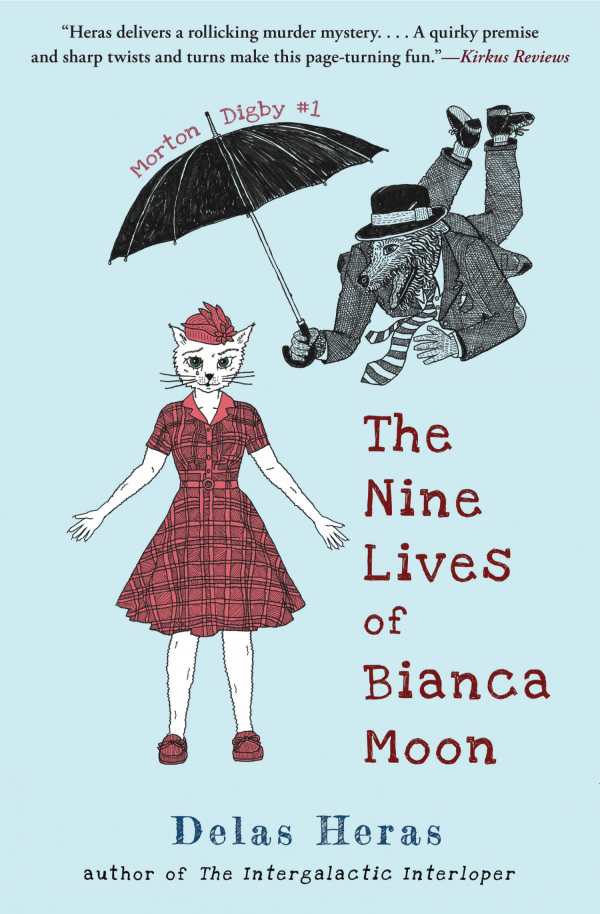The Nine Lives of Bianca Moon
Morton Digby #1
The Nine Lives of Bianca Moon is a wry satirical novel—a comedy of errors in which anthropomorphized animals live, die, and solve murders with the help of spirits.
In Delas Heras’s mystery novel The Nine Lives of Bianca Moon, a murdered journalist, a headstrong bartender, and a pair of underdog detectives race to find a killer.
In an alternate version of 1950s New York, Flint is murdered in almost comical fashion: a falling piano smashes into him while he’s standing in front of a bakery, and it is clear that the piano crashing down was not an accident. Morton and J.B. arrive on the scene; they’re junior detectives who believe that the incident was an accident until they discover the calling card of Val, a mysterious assassin for hire. The detectives investigate with gusto while Flint’s soon-to-be fiancée, Bianca, decides to find his killer herself. Meanwhile, Flint adapts to his new life as a ghost, befriending a group of ghosts who take up residence in an abandoned courthouse.
While it has all the earmarks of a noir/mystery thriller, The Nine Lives of Bianca Moon takes a novel approach: instead of humans, the world is populated by animals, with dogs and cats being the dominant presence. The animal element injects interesting opportunities for social commentary and humor. Most characterizations are matched up with a perfect stereotype version of an animal: a gruff captain is a drooling bulldog, the firefighters are all dalmatians, and there’s a clear rivalry between dogs and cats for social hierarchy throughout. A tapestry of vibrant scenes, colorful creatures, and unusual features, the book follows these animals who rose to dominance while retaining many hallmarks of human history in a way that holds interest. It is a fun, often hilarious alternate world hosting a story that brims with clever puns.
The inclusion of the ghosts, though, drains all tension from the story’s mystery. The ghosts seem to be privy to all knowledge, and they can provide answers and resolve conflict with too much ease. Since they are already dead and living people can become ghosts, the novel’s stakes bottom out. The ghost world takes over as the most intriguing element of the story nonetheless, with rich characters and unusual mechanics involved in how the dead interact with the living.
Indeed, in the end, the ghosts are the most compelling characters—the only members of the cast to experience true transformations. Bianca adds comparatively little to the story; her central characteristic is her rage over losing Flint, to the point that she enters situations in which she loses several of her nine lives for silly reasons. Because she is otherwise so stagnant, though, even her rage comes to feel inexplicable; she evades introspection and evokes little sympathy. Meanwhile, Morton and J.B. don’t do much true detective work: most of their leads turn out to be useless, and the crimes they arrest criminals for were found out and recorded by Flint long before. And while Morton is set apart as the series’ prospective anchor, his lack of action makes him less than inspiring.
The Nine Lives of Bianca Moon is a wry satirical novel—a comedy of errors in which anthropomorphized animals live, die, and solve murders with the help of spirits.
Reviewed by
John M. Murray
Disclosure: This article is not an endorsement, but a review. The publisher of this book provided free copies of the book and paid a small fee to have their book reviewed by a professional reviewer. Foreword Reviews and Clarion Reviews make no guarantee that the publisher will receive a positive review. Foreword Magazine, Inc. is disclosing this in accordance with the Federal Trade Commission’s 16 CFR, Part 255.

